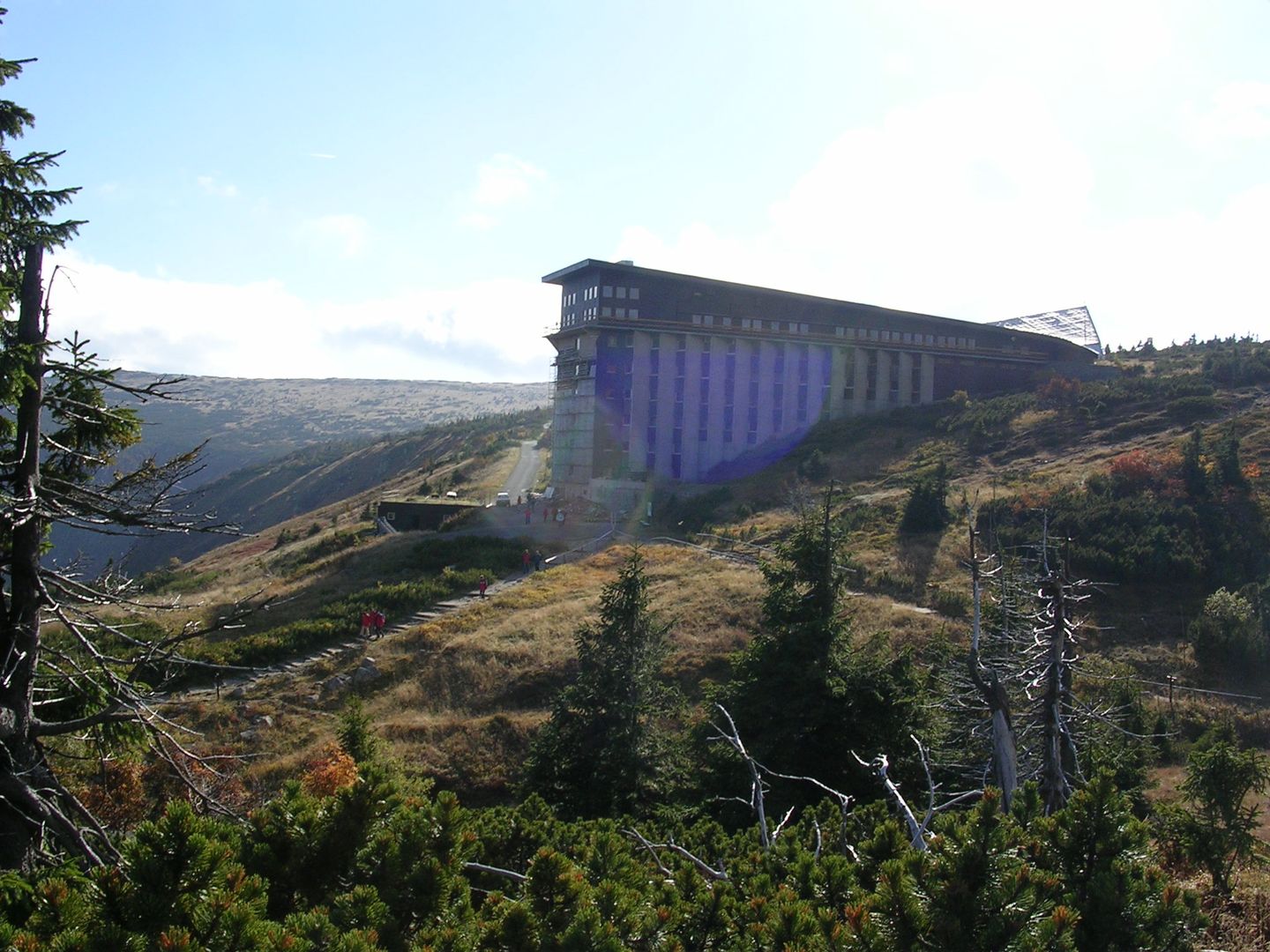Labská bouda
6.81

Overview
Labská bouda, a well-known Czech mountain lodge in the Krkonoše Mountains, is situated at an altitude of 1,340 meters above sea level, overlooking the Labský důl valley near the source of the Elbe River. Its history dates back to 1830, when an enterprising woman known as "die Blasse" built a small shack offering goat cheese and milk. Over the years, the facility evolved into a mountain lodge, and in 1878–1879, a proper mountain chalet was constructed on the site, designed by Count Jan Harrach. The lodge quickly gained popularity, especially thanks to its regional cuisine, which featured delicacies such as dumplings with cracklings. Enriched by the establishment of the first nature reserve in the Krkonoše in 1904, it became a key destination for tourists in the region.
In 1934, Bedřich Hloušek became the new owner of the lodge, and after World War II, it was nationalized. Tragedy struck in 1965 when the building burned down due to an accident involving a kerosene lamp. Reconstruction took place from 1969 to 1975 under the supervision of architect Zdeněk Řihák. Until 1996, Labská bouda remained state-owned before being privatized. After a major renovation, the lodge reopened to tourists in 2004. Since 2007, it has been owned by the company Pumr & Ryba.
The facility offers 120 beds across 79 rooms, providing not only comfortable accommodation but also additional amenities such as a sauna, gym, and internet access. Numerous hiking trails in the immediate vicinity lead to other mountain lodges, making Labská bouda an ideal starting point for mountain enthusiasts. Interestingly, the lodge was closed during the winters of 2018/2019 and 2019/2020 due to renovation work, underscoring the commitment to maintaining its condition and guest comfort.
Labská bouda is not just a mountain lodge—it is also an important part of the cultural heritage of the Krkonoše, blending tradition with modernity.
Location
Country
2025 Wizytor | All Rights Reserved